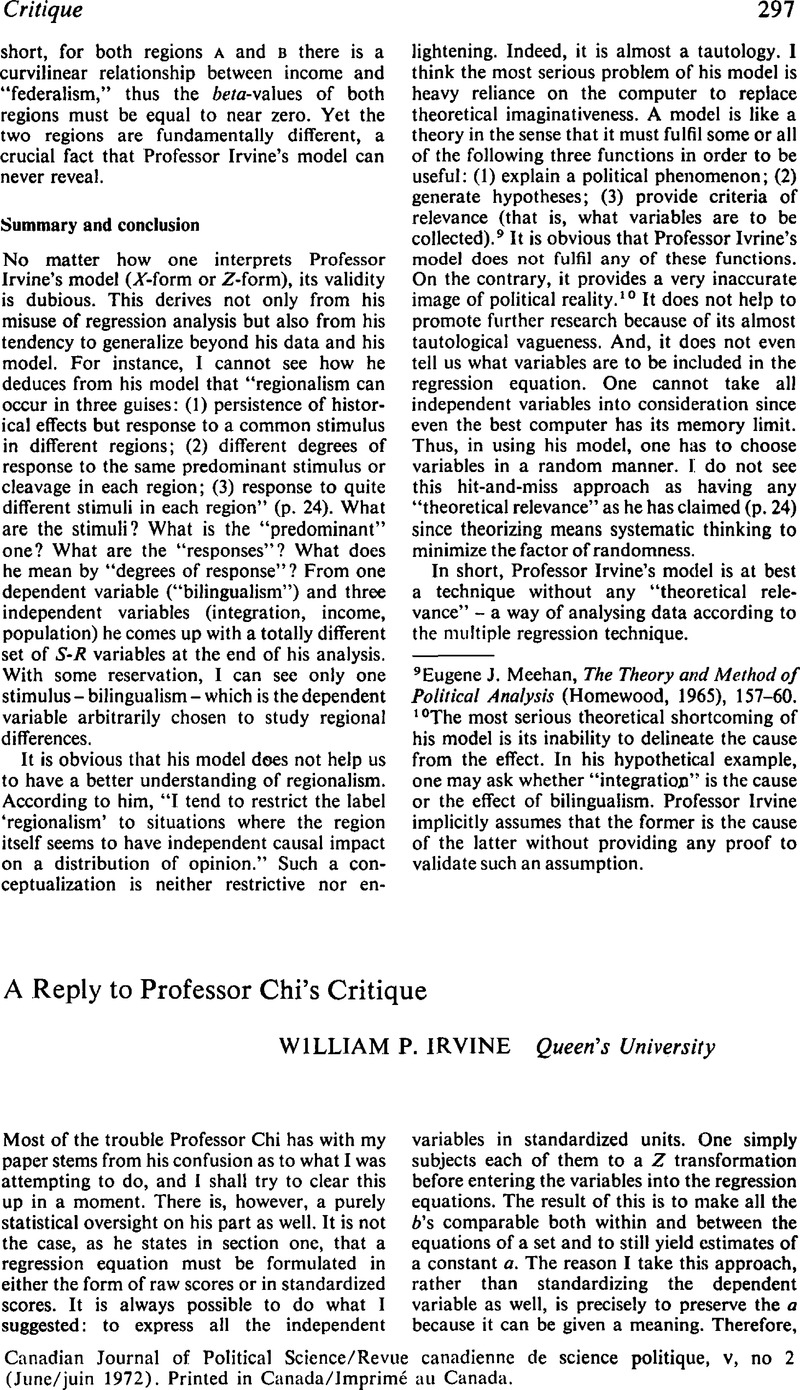Article contents
A Reply to Professor Chi's Critique
Published online by Cambridge University Press: 10 November 2009
Abstract

- Type
- Notes
- Information
- Canadian Journal of Political Science/Revue canadienne de science politique , Volume 5 , Issue 2 , June 1972 , pp. 297 - 300
- Copyright
- Copyright © Canadian Political Science Association (l'Association canadienne de science politique) and/et la Société québécoise de science politique 1972
References
1 In his summary, Professor Chi has trouble with my language of stimulus and response. Let me try to enlighten him briefly: a stimulus is an independent variable; a response is a change in a dependent variable; the degree of response is measured by a b coefficient; the predominant stimulus is one that produces the biggest response for one standard unit of change (that is, it has the biggest b coefficient).
2 Even in this case, Professor Chi denies only the practical and not the conceptual utility of my approach.
3 “The Measurement of Regionalism in Canadian Voting Patterns,” this JOURNAL, V, no 1 (March 1972), 55–81.
4 R.J. and Wonnacott, T.H., Econometrics (New York, 1970)Google Scholar, chaps. 8, 9, and 16–19. See also Mosback, E.J. and Wold, H.O., Interdependent Systems: Structure and Estimation (Amsterdam, 1970)Google Scholar, chaps. 2, 4, 7, 10, and 13.
5 Residual error is a function of both explanatory power and the original variance in Y. It is not as useful an indicator of goodness of fit, in my view, as R 2.
6 Blake, “The Measurement of Regionalism.”
7 There are still other problems which have not yet been raised by either Professor Chi or myself, such as the perennial problem of multicollinearity or the “tipping” effect of extraneous variables. These fall in the class of avoidable problems. For a stimulating discussion of these, see Gordon, R.A., “Issues in Multiple Regression,” American Journal of Sociology, LXXIII (1968), 592–616.CrossRefGoogle Scholar
- 1
- Cited by




